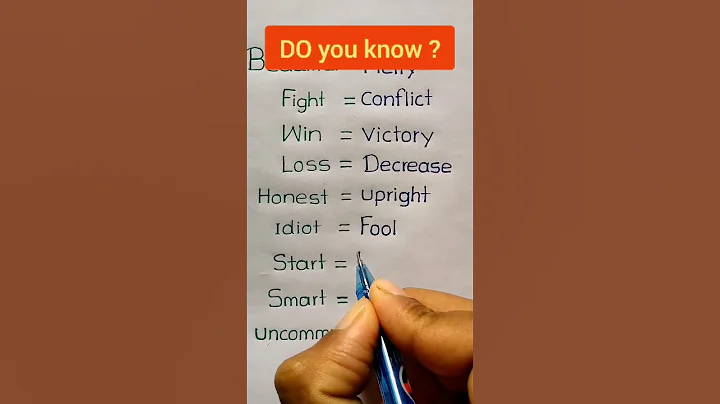
Vocational education refers to education that allows educated people to obtain a certain occupation or production labor education education. Vocational education includes vocational school education and vocational training. Vocational school education includes various vocational and technical schools , technical schools , vocational high school ( vocational middle school ), etc.
Vocational school education is an education that is divided into primary, secondary and higher vocational schools education. Vocational training includes various vocational training for employees before employment, reemployment training for laid-off workers, and other vocational training. The purpose of education is to cultivate applied talents and workers with certain cultural level and professional knowledge and skills. Compared with general education and adult education, vocational education focuses on the cultivation of practical skills and practical work abilities.
The "Vocational Education Law" was revised for the first time, clarifying the positioning of type education, deepening the integration of industry and education in , and school-enterprise cooperation. The enrollment of higher vocational colleges has been expanded by 4.133 million in three years, and the enrollment of higher vocational colleges (junior colleges) in 2021 is 5.526 million, which is 1.8 times that of ten years ago. Vocational schools across the country have opened more than 1,300 majors and more than 120,000 professional points, basically covering all areas of the national economy and continuously cultivating and transporting talents to the society.
In modern manufacturing , strategic emerging industries and modern service industries, more than 70% of the new front-line practitioners in my country come from vocational school graduates.
Since the implementation of 11th Five-Year Plan Outline , under the attention and promotion of the central and local governments, China's vocational education system has been continuously improved and the school management model has been continuously innovated. The enrollment scale and graduate employment rate have reached a new level and are on the fast lane of development.
Chinese students use vocational education as a springboard. It is relatively simple to work for one year after graduation and transfer credits to go to a university. Moreover, for those who want to immigrate, it will be more beneficial to have work experience. In vocational schools, the school clearly states that those who can transfer credits or those who cannot transfer credits are easy for students to choose.
In Canada, vocational education majors can be changed. If you have studied for a while and feel that this major is not suitable for you, you can apply to transfer to other majors, and some course credits can also be transferred. The procedures and procedures for changing majors are very simple, giving students a lot of room for choice. This should be a talent training model that my country's vocational education can actively explore learning. The Toronto Institute of Technology in Canada has launched a new graduate degree program, which has established some highly practical majors such as computer engineering technology, computer operating system technology, film and television and animation art, real estate management and management, and health care management, which can meet the study needs of some self-study and adult education undergraduates.
Singapore The head of an education group said that the Singapore Vocational Education College is a cradle specializing in cultivating professional talents, with a very complete professional setting, and the school is like a large composite factory with quite complete testing equipment. Students can get in touch with and learn from the assembly line of their future work at school. Moreover, the college will also arrange paid internships for students, and the general internship period is 2-4 months. The college itself is a talent processing factory, and the output graduates can directly be competent for jobs.
At present, China's economic structure and science and technology have undergone major changes, and many people still retain the old concept that the manufacturing assembly line requires a large number of workers. But the reality is that the number of workers on assembly lines is getting smaller and smaller, and manufacturing workers account for only 11.7% of the total labor force population, and will also decline. China's labor force population is 900 million, and the average number of years of education for the working-age population is 10.5 years, which is lower than that of developed countries such as the United States, Japan and Germany.
At present, there are still many problems in the development of vocational education in my country that need to be continuously improved, and vocational education is still in the initiation of development. With the reform and innovation of vocational education in my country in recent years, secondary vocational education is gradually beginning to grow and thrive.Especially with the influence of the tightening policy of recruitment of ordinary high schools, the "middle school entrance examination diversion" has allowed some students who have not entered ordinary high schools to choose secondary vocational education, which has made the students in secondary vocational schools grow stronger and gradually began to develop towards the quality of vocational education
What is the market prospect of China's vocational education industry? The "China Vocational Education Industry Market Operation Trend and Investment Strategy Consulting Report" released by Zhiyanzhan Industry Research Institute in detail analyzes the potential of China's vocational education energy resources, China's vocational education industry policies, China's vocational education energy development and utilization technology at home and abroad, China's vocational education energy utilization industry development, China's vocational education energy enterprise operation, China's vocational education energy industry development prospects and investment planning, etc., to help enterprises and investors understand the market investment value of China's vocational education energy industry. If you want to have a systematic understanding of China's vocational education energy industry or want to invest in China's vocational education energy industry, this report is an indispensable and important tool for you.











